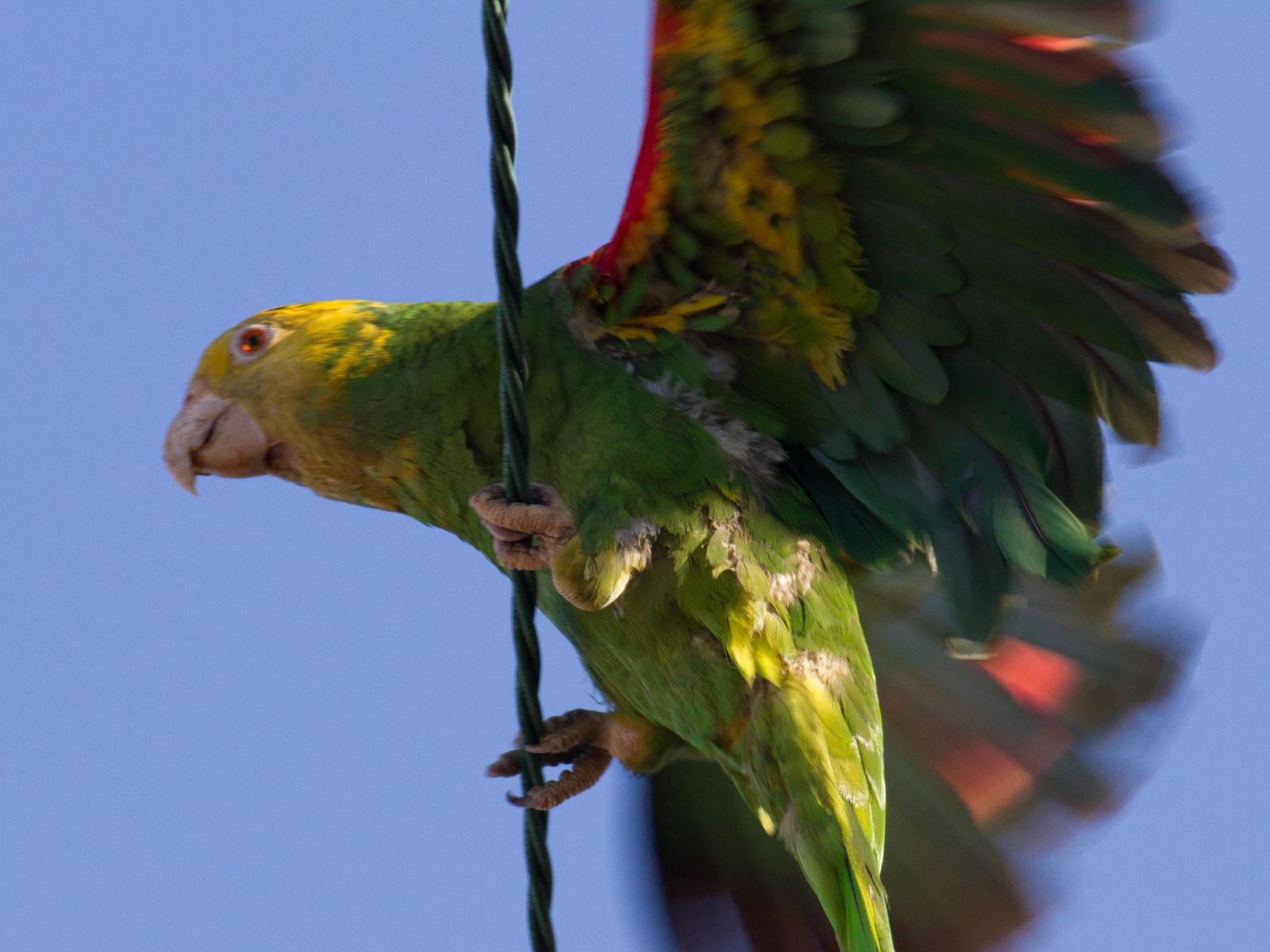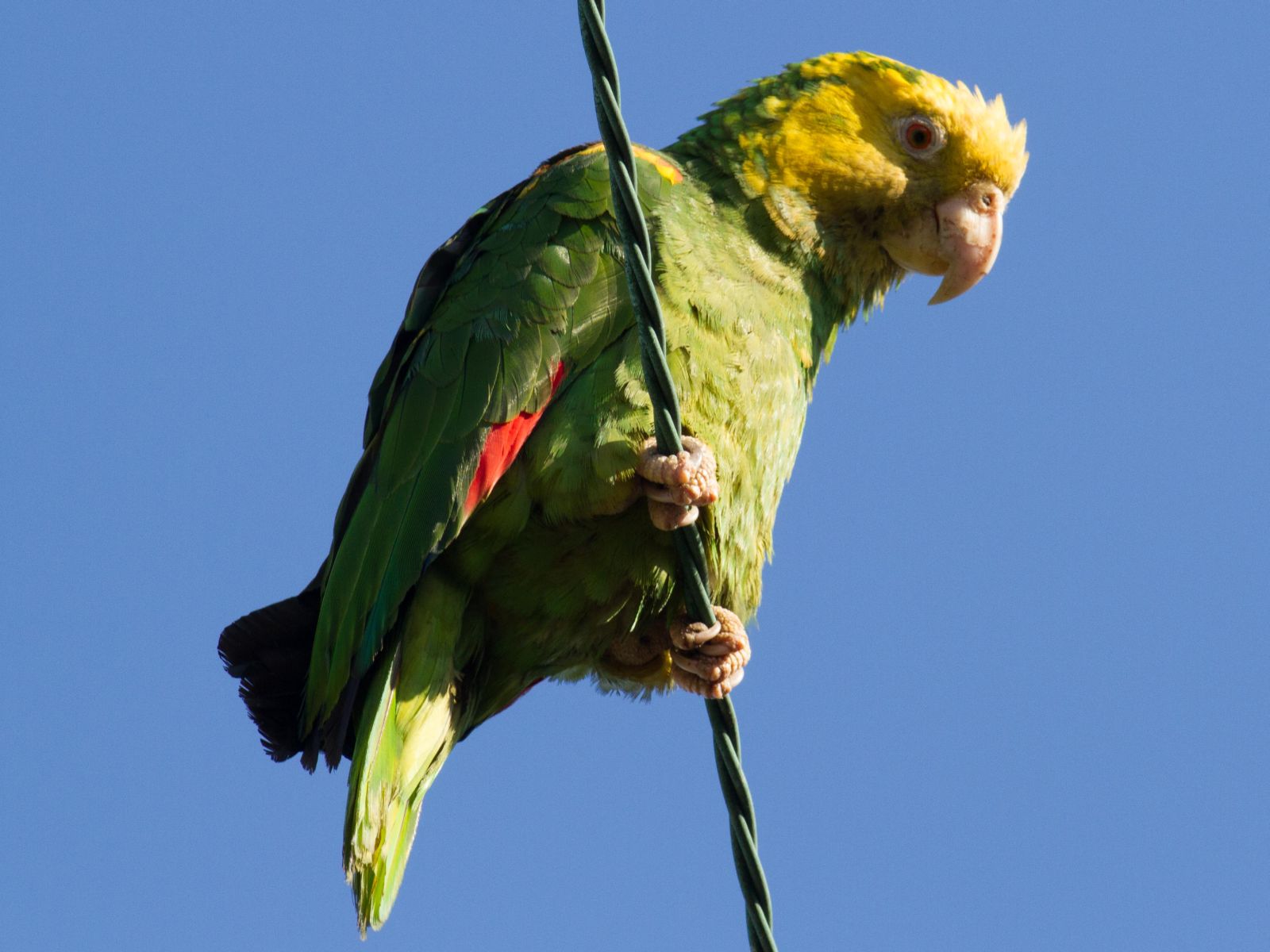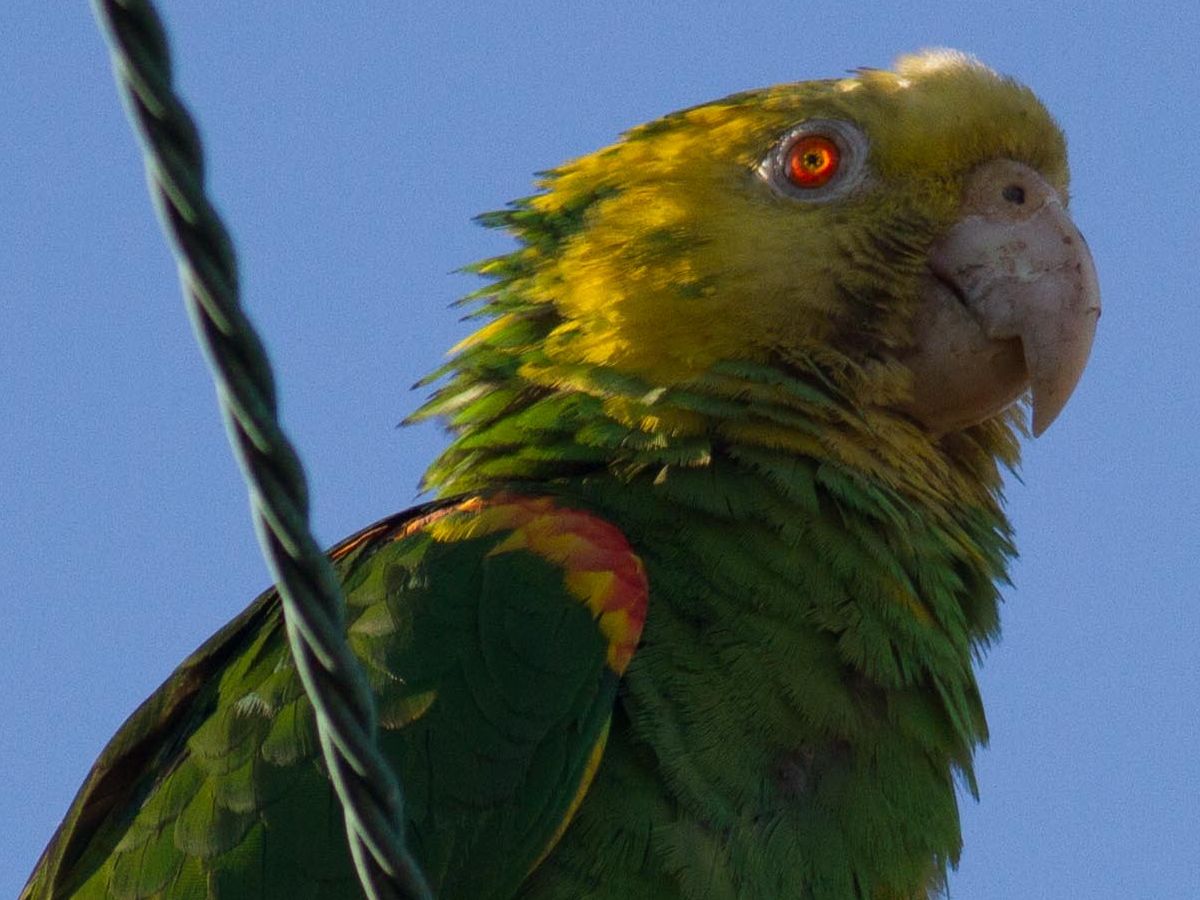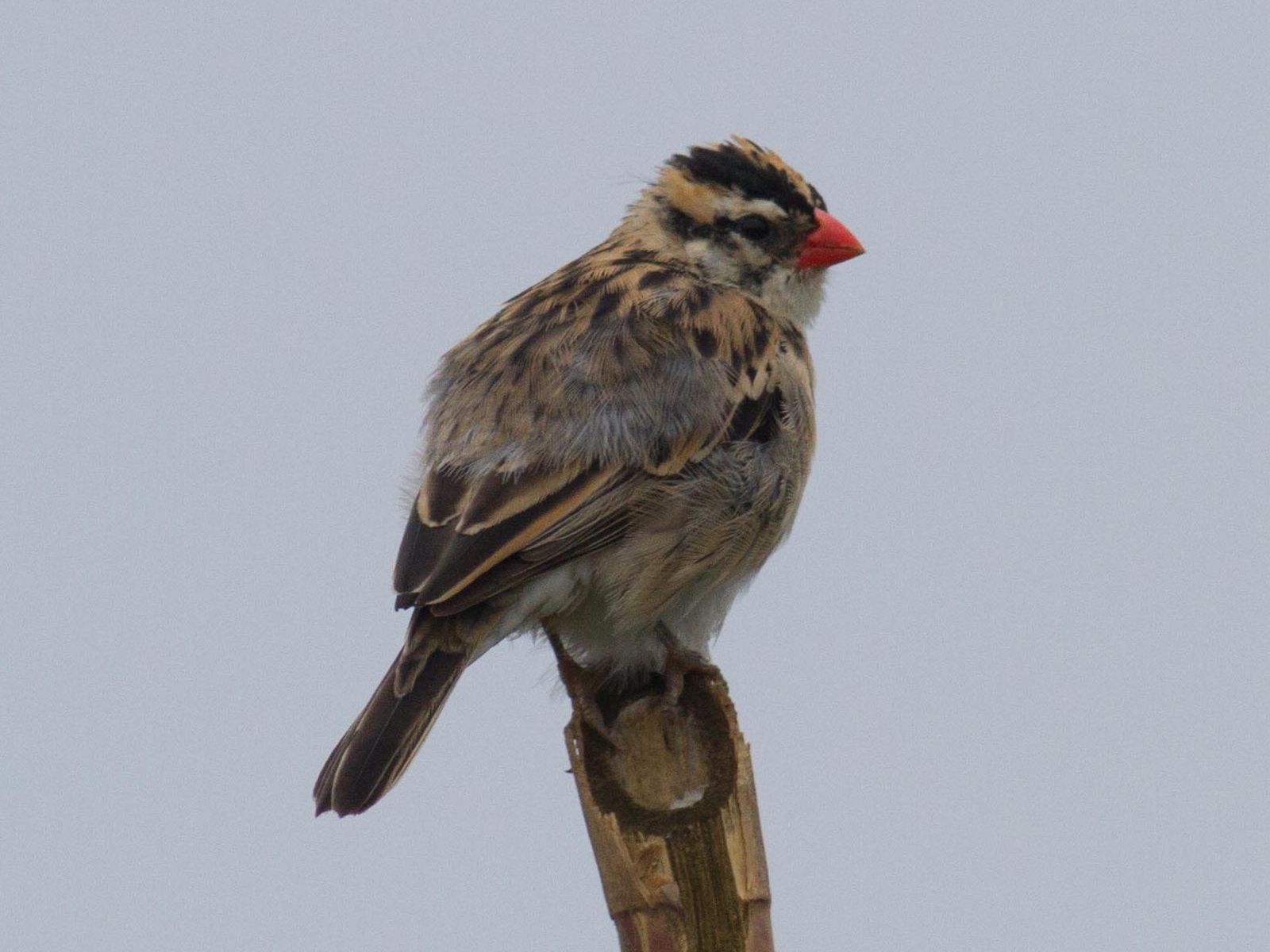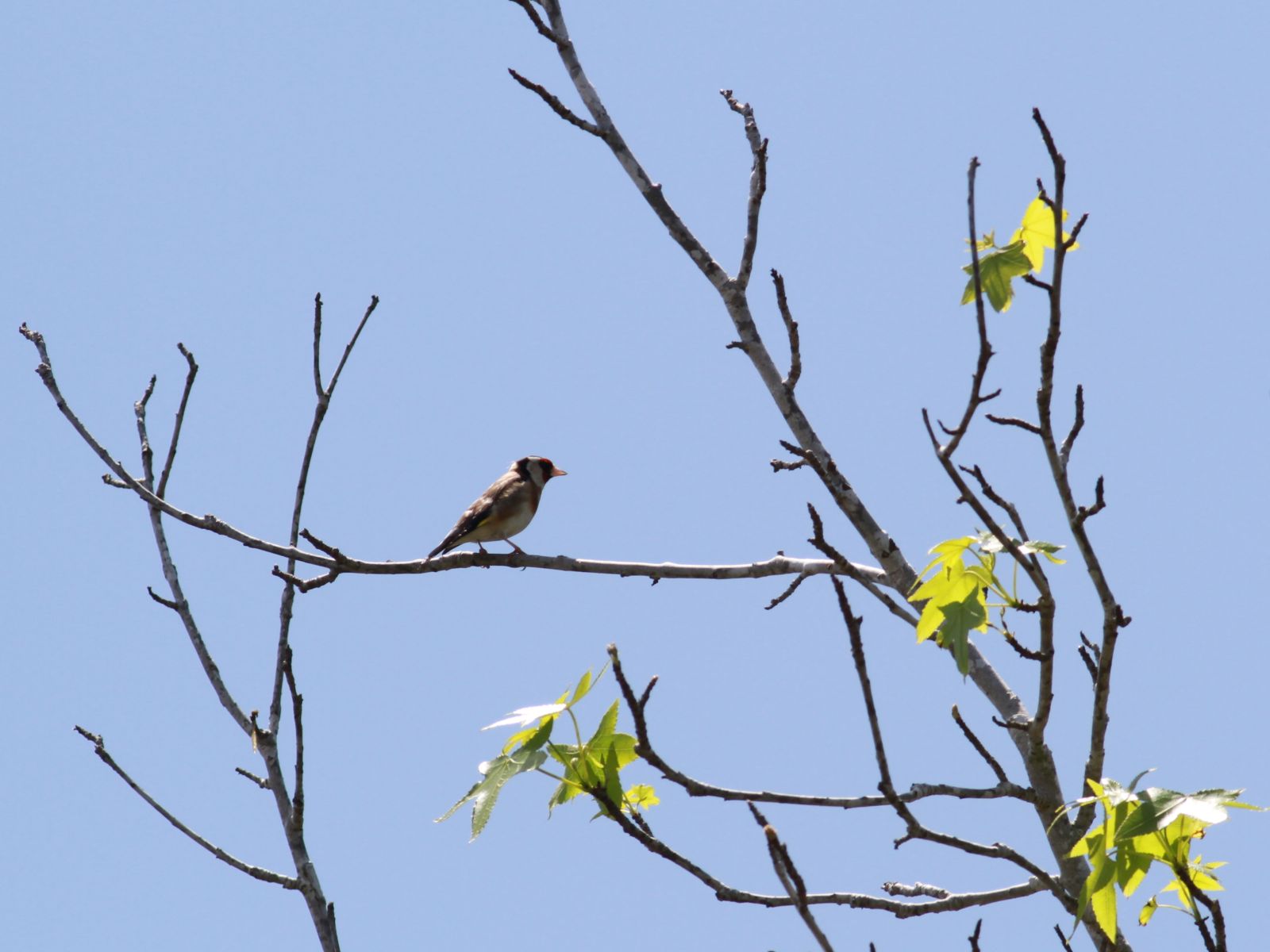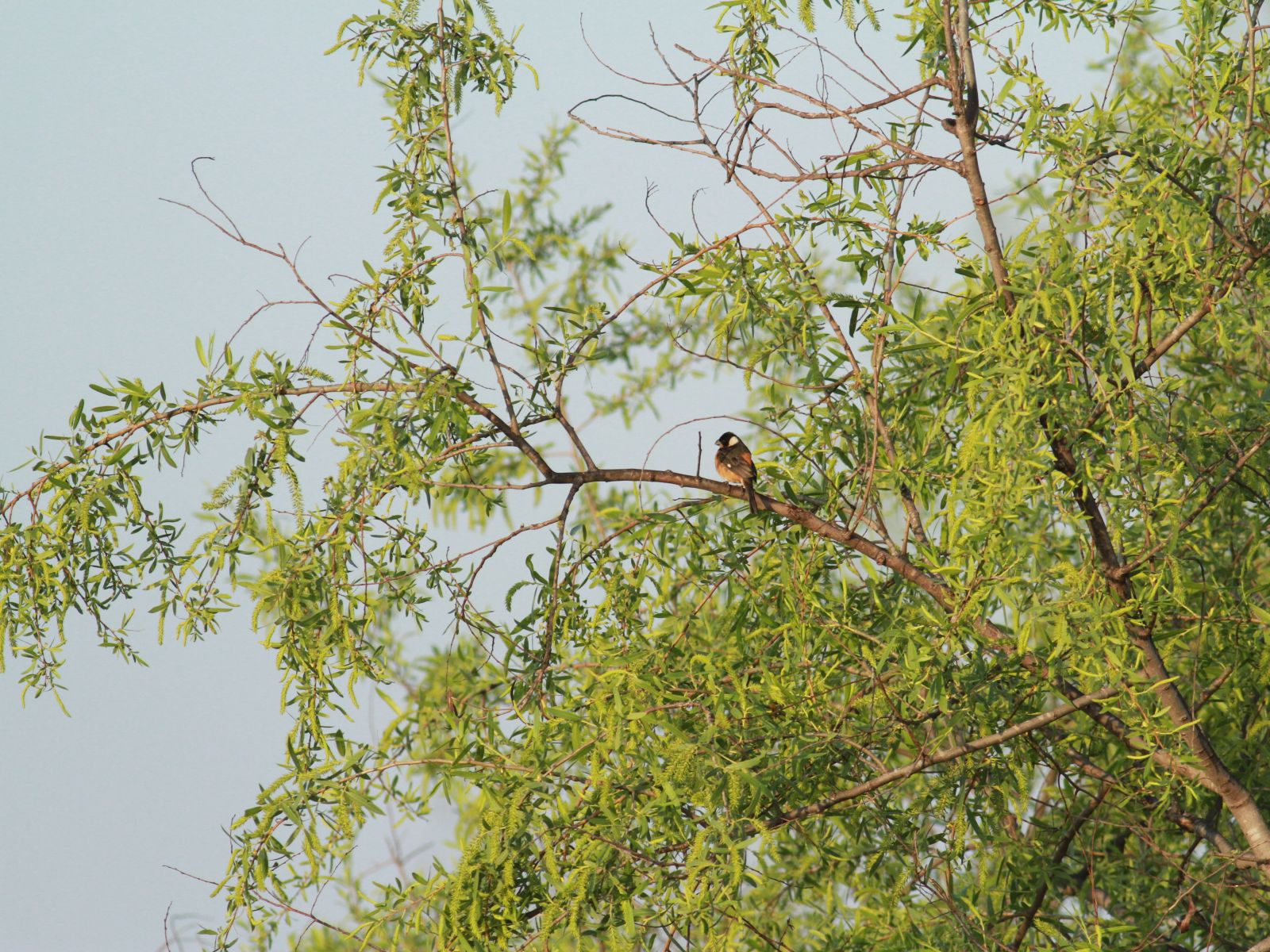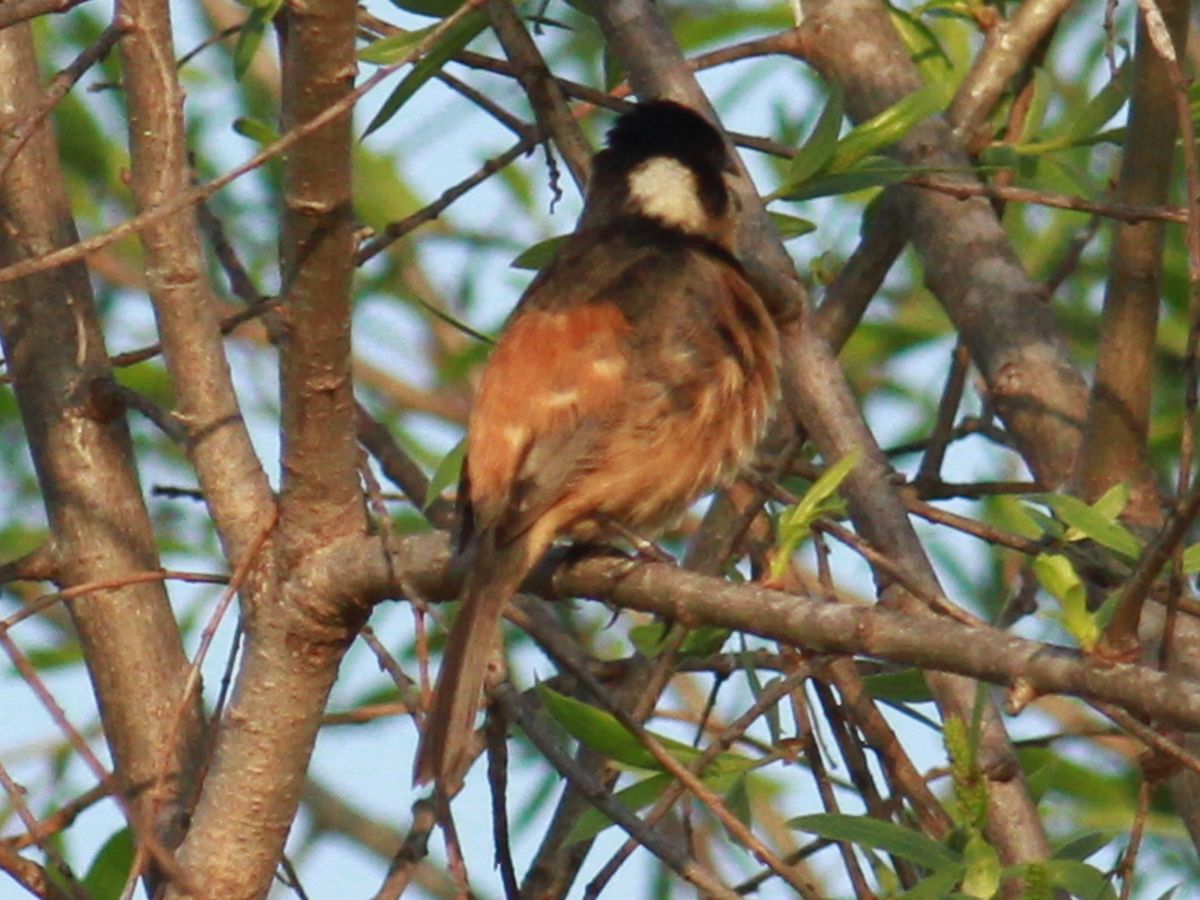[All photographs copyright, Gary Nunn 2013] – Driving out of (North) 7th Street in Imperial Beach this evening, I quickly pulled the car over to the curb when a magnificent pair of Yellow-headed Amazon Amazona oratrix came flying down the street right at me! Close views of parrots, wild or introduced, are always exciting and these birds were no exception. I hopped out, camera in hand, and ran back down the street. Larger in size than Lilac-crowned and Red-crowned Parrots, and stunning looking in canary yellow head plumage, it was easy to see why the pet trade had decimated their wild populations in Mexico in recent decades. Now massively reduced in numbers a population estimate, somewhat dated now from 1994, puts them at around only 7000 individuals left in the wild found in Mexico, Belize, and Guatemala. BirdLife International considers this species Endangered because of the precipitous population decline.
The pair of Yellow-headed Amazon sat together on the overhead line for a few minutes before disappearing into the greenery of a medium size and densely crowned pine tree found in a front yard on 7th Street. The resident with the pine tree in her front yard actually came out of her house and told me that the Yellow-headed Amazons had been coming to her pine tree for years. The bed of chewed up small pine cones under the tree evidenced her statement! She also mentioned there were more of them in past years, 4-6 birds sometimes appearing. But only two individuals came now, and almost every day at the same time! As I walked back to my car another resident of 7th St., watering his front yard nearby, smiled and told me more stories about the parrots. Evidently these birds are well regarded by the local residents of Imperial Beach!


